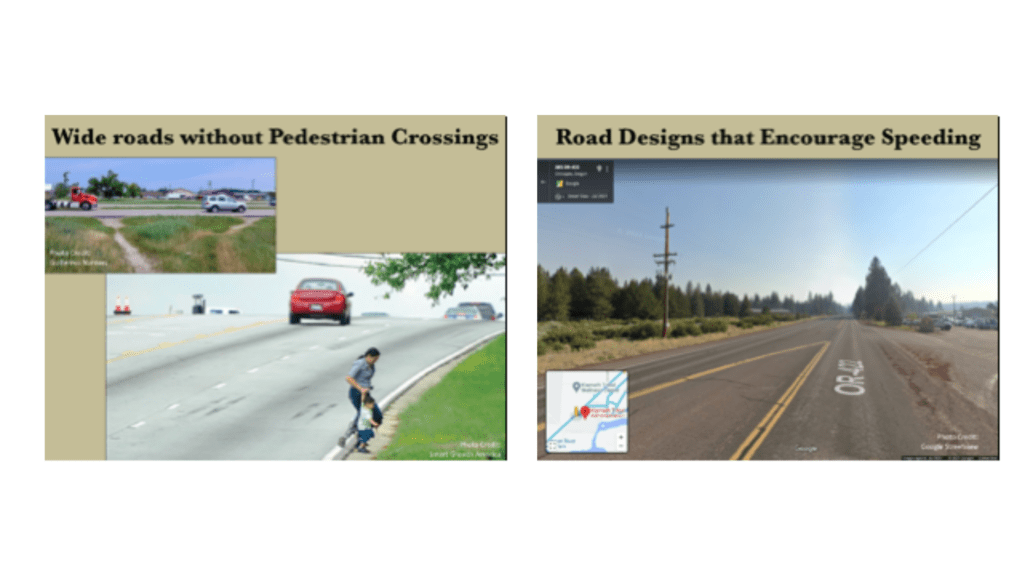Pedestrian fatalities in the U.S. have been rising steadily for more than a decade, and some groups are disproportionately impacted. For example, people who identify as American Indian or Alaska Native are almost four times more likely to be killed while walking than the average American.

Research shows that vehicle speed is the critical factor. When a pedestrian is hit by a car at 20 mph, the fatality risk is only 5%, but this rises to 85% for a vehicle traveling at 40 mph. And this problem is compounded by road designs that encourage excessive speeds, especially in tribal communities where millions of Native people live.

To understand and start addressing this tragedy, America Walks is hosting an ongoing series of Policy Round Tables on Tribal Pedestrian Safety, with funding support from the U.S. Centers for Disease Control and Prevention. The following “problem statement” was developed to define the scope of the discussion.
Tribal communities are often bisected by County, State, or Interstate highways with high-speed traffic, which create safety, health, and quality-of-life problems for residents.

The first Policy Round Table was held virtually in December 2022. More than forty tribal leaders, planners, engineers, public health professionals, state and federal DOT officials, researchers, and safety advocates participated.
The group discussed the various ways in which communities are harmed:
- Residents are killed or injured while walking or biking.
- Short trips that involve crossing the highway are completed by driving.
- Parents do not allow their children to play outside without supervision.
- Access to limited physical activity causes/exacerbates chronic disease conditions.
- Noise and air pollution negatively impact mental and physical health.
- Travelers pass through the community without any cultural exchange.
- All of these conditions create stress and reduce quality of life.
And identified several potential strategies:
- Reduce vehicle speeds to 20 miles per hour within communities.
- Create a traffic calming “gateway” at the location where vehicles enter community.
- Use narrow lanes, visual friction, terminating vistas, artistic and cultural designs, informational signs, etc. to encourage/compel drivers to slow down.
- At multiple locations within a community, install landscaped medians, pedestrian crossings with bulb-outs and/or central islands, and intersections with STOP signs.
- Test traffic calming designs by creating and evaluating temporary “pop-up” projects.
- Incorporate all solutions into a Tribal Pedestrian Safety Action Plan (TPSAP).
- Explore Reconnecting Communities and other funding opportunities.
Read the complete Final Report and Recommendations for Next Steps following the initial Policy Round Table on Tribal Pedestrian Safety
A second Policy Round Table on Tribal Pedestrian Safety was held in September 2023 at the National Transportation in Indian Country Conference in Anchorage. During this discussion, specific plans to develop training sessions and guidance documents, and conduct a “pop-up” gateway or roundabout model installation project were advanced.
Stay tuned for more updates!
This project was supported by Cooperative Agreement Number OT18-1802 from the Centers for Disease Control and Prevention (CDC) supporting Active People, Healthy Nation Initiative, a national initiative led by the CDC to help 27 million Americans become more physically active by 2027 (learn more here). Its contents are solely the responsibility of the authors and do not necessarily represent the official views of CDC.